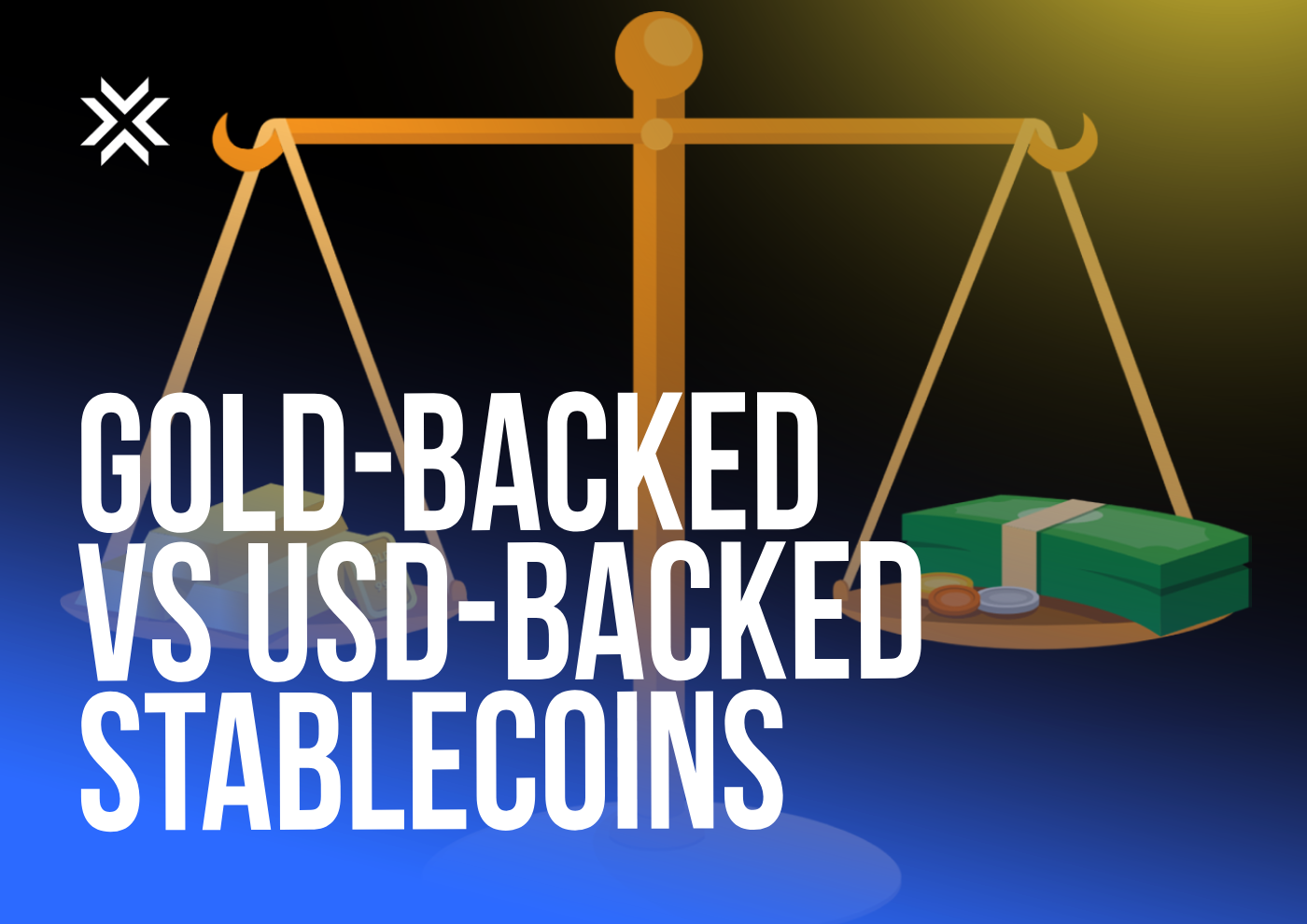Stablecoins have become essential in crypto, offering stability in an otherwise volatile space. But not all stablecoins are created equal — especially regarding what they’re backed by.
Let’s break down the differences between the two popular types: gold-backed and USD-backed stablecoins. Which one’s better? It depends on your needs.
What Are USD-Backed Stablecoins?
USD-backed stablecoins are digital tokens pegged 1:1 to the US dollar. This means that for every stablecoin issued, the issuer should hold in reserve an equivalent dollar (or dollar-denominated asset).
Examples:
- USDT (Tether) — The most traded stablecoin globally with over $110B in market cap as of early 2025.
- USDC (USD Coin) — Backed by Circle and Coinbase, known for its regulatory transparency.
- BUSD (Binance USD) — Previously supported by Binance, now winding down following regulatory pressure.
How It Works:
If you give a dollar, you get a token. If you return the token, you get your dollar back. The reserves are usually cash, Treasury bills, or commercial paper.
What Are Gold-Backed Stablecoins?
Gold-backed stablecoins are pegged to the price of physical gold. Every token represents ownership of a certain amount of gold, typically stored in secure vaults and audited regularly.
Examples:
- PAXG (Paxos Gold) — Each token totals one fine troy ounce of gold in London vaults.
- XAUT (Tether Gold) — Offers ownership of physical gold, redeemable for delivery in Switzerland.
How It Works:
Think of it like tokenized gold bars. Stablecoins expose you to real-world gold without the hassle of storage, security, or transportation.
| Feature | USD-Backed Stablecoins | Gold-Backed Stablecoins |
| Backing Asset | US Dollar | Physical Gold |
| Peg Stability | Maintained via fiat reserves | Linked to the gold price |
| Volatility | Low | Slightly higher (gold fluctuates) |
| Use in DeFi | High | Growing, but limited |
| Accessibility | Widely used | Still niche |
| Regulatory Scrutiny | Increasing | Varies by issuer |
Which One Is More Stable?
It depends on your definition of “stable.”
- USD-backed stablecoins have a stable purchasing power relative to the US dollar.
- Gold-backed stablecoins may fluctuate slightly because gold isn’t pegged to a currency, but they’re often considered a long-term hedge against inflation.
Interesting Stat:
During the 2008 financial crisis, gold soared from $869 to over $1,200 per ounce in just over a year. In contrast, the dollar lost purchasing power. In inflationary environments, gold can outperform fiat.
Use Cases: Different Tools for Different Jobs
USD-Backed Stablecoins:
- Ideal for trading, remittances, and yield farming
- Widely accepted in DeFi protocols, making them the default choice for most dApps
Gold-Backed Stablecoins:
- Great for long-term storage of value
- Useful for those looking to diversify away from fiat currencies
- Especially appealing in regions with unstable local currencies
Why does this matter globally
Gold-backed stablecoins are gaining traction in countries facing currency devaluation. For example, in Venezuela and parts of Africa, access to gold-backed tokens provides a way to store value digitally without relying on a weakening national currency.
Meanwhile, USD-backed stablecoins like USDT dominate crypto trading, accounting for over 70% of stablecoin transaction volume worldwide.
Final thoughts: Which one should you use?
If you’re looking for stability for daily transactions or DeFi participation, USD-backed stablecoins are the clear winner. But if you want a store of value that’s stood the test of time, gold-backed stablecoins bring a unique advantage.
Both types serve a purpose — it depends on whether you’re betting on the dollar or the timeless appeal of gold.









